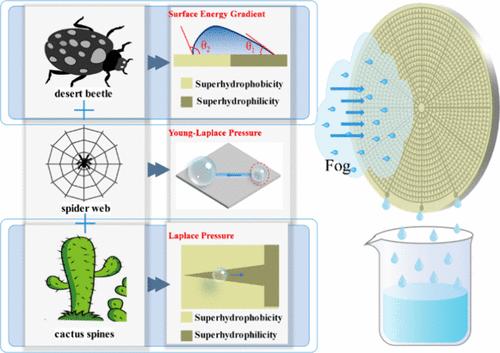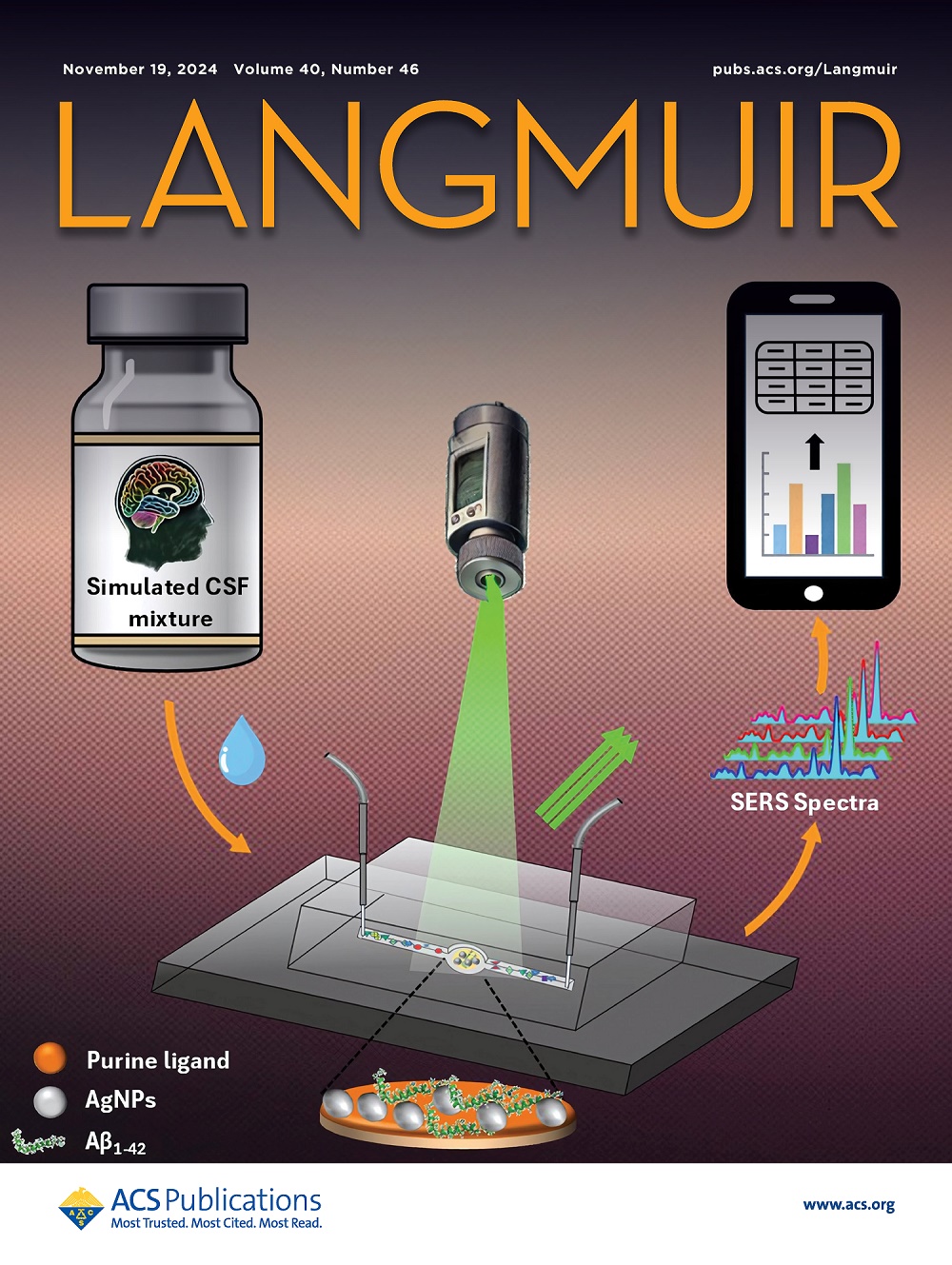Water Collection and Transport on Bioinspired Surface Integrating Beetles, Spider Webs, and Cactus Spines
IF 3.7
2区 化学
Q2 CHEMISTRY, MULTIDISCIPLINARY
引用次数: 0
Abstract
Freshwater scarcity is a pressing global issue, and water collection from fog offers a promising, cost-effective, and environmentally friendly solution. Inspired by the water collection mechanisms of desert beetles, spider webs, and cactus spines, we designed interconnecting superhydrophilic–superhydrophobic-region patterns for efficient water collection, which was achieved by low-energy fluorine-containing coating on Aluminum (Al) substrate followed by laser marker ablation to form superhydrophilic pattern out of the overall superhydrophobic surface. The pattern featured superhydrophilic interconnecting spider webs combined with triangular cactus spines on superhydrophobic surfaces with a water contact angle of 159.3° and a water rolling angle of <1°. The first drop collection time of the optimally patterned sample was remarkably short at only 51.3 s and the weight of it was 0.0414 g under a fog flow rate of 600 mL/h, a result that has rarely been reported in the literature. The corresponding water collection rate reached 840.54 mg·cm–2·h–1, which was 68.64 and 229.38% higher than those of the superhydrophilic and superhydrophobic surfaces, respectively. Even compared to several high-rate patterns reported in the literature, our optimally patterned sample demonstrated a superior water collection rate. The high proportion of hydrophilic regions along with the surface energy gradient, Laplace pressure, and Young–Laplace pressure originating from the pattern drove the patterned sample to excel in mist adsorption, nucleation, growth, and directional transport of droplets to the shedding point, ensuring timely collection. The enhancement mechanism of the water harvesting for inhomogeneous wettable surfaces was analyzed, with one focus on reducing loss in hydrophobic regions and the other on improving the balanced cycling of the collection process. Additionally, laser marker ablation to pattern surfaces according to designs is suitable for large-scale production due to its low cost, high efficiency, and flexible processing.

求助全文
约1分钟内获得全文
求助全文
来源期刊

Langmuir
化学-材料科学:综合
CiteScore
6.50
自引率
10.30%
发文量
1464
审稿时长
2.1 months
期刊介绍:
Langmuir is an interdisciplinary journal publishing articles in the following subject categories:
Colloids: surfactants and self-assembly, dispersions, emulsions, foams
Interfaces: adsorption, reactions, films, forces
Biological Interfaces: biocolloids, biomolecular and biomimetic materials
Materials: nano- and mesostructured materials, polymers, gels, liquid crystals
Electrochemistry: interfacial charge transfer, charge transport, electrocatalysis, electrokinetic phenomena, bioelectrochemistry
Devices and Applications: sensors, fluidics, patterning, catalysis, photonic crystals
However, when high-impact, original work is submitted that does not fit within the above categories, decisions to accept or decline such papers will be based on one criteria: What Would Irving Do?
Langmuir ranks #2 in citations out of 136 journals in the category of Physical Chemistry with 113,157 total citations. The journal received an Impact Factor of 4.384*.
This journal is also indexed in the categories of Materials Science (ranked #1) and Multidisciplinary Chemistry (ranked #5).
 求助内容:
求助内容: 应助结果提醒方式:
应助结果提醒方式:


